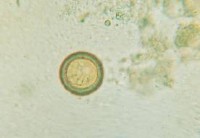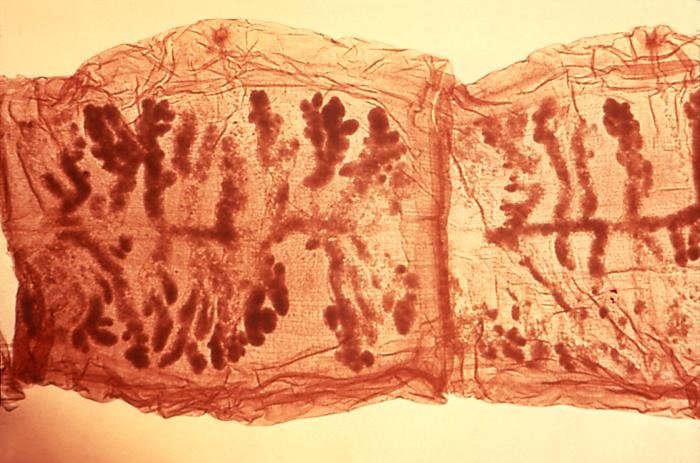Taenia solium (continue)
- To know the pathognomonic symptoms and
signs.
- To explain why these symptoms and signs occur.
- To sort methods of diagnosing taeniasis solium.
- To list drugs which can treat the infection.
- To list methods of control of taeniasis solium.
1.
Presence of the large sized parasite in the
small intestine will interfere with the digestive and absorptive function of
the intestine leading to intestinal disturbances and obstruction.
2.
Parasite will consume much of the food of the
patient leading to loss of weight.
3.
Ingestion of T. solium egg by man will
lead to development of its larval stage (cysticercus cellulosae)
extra-intestinally causing a dangerous condition known as cysticercosis.
- Detection
of egg in faeces which is morphologically similar with T. saginata egg
so we must differentiate them by Ziel-Neelsen stain (acid-fast stain) where T.
saginata egg is stained well but T. solium egg is not.
- Detection
of gravid segments (lateral branches 7-12).


-
Praziquantel and Niclosamide which cause
disintegration of segments of the parasite leading to cysticercosis.
-
It is better to give Quinacrine hydrochloride
(atebrine) as it will lead to paralysis of hold which results from paralysis of
nerve ganglia in the scolex so suckers cannot attach to mucosa leading to
expulsion of the intact worm.
1.
Treatment of infected individuals (who are the
only source of infection to the intermediate host).
2.
Prevention of contamination of soil with human
faeces.
3.
Protection of intermediate host by preventing
them from grazing in contaminated areas.
4.
Proper inspection of slaughtered pigs.
Infected carcasses must be condemned.
5. Thorough cooking or deep freezing of meat to kill larvae.